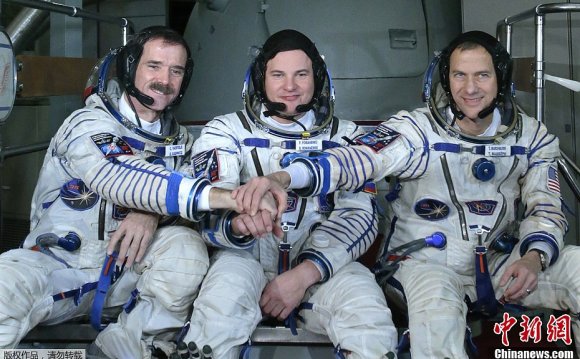
Imagine going camping for over a week with several of your close friends. You would make sure you have plenty of food and the gear to cook and eat it with. The food would have to be stored properly and nonperishable to avoid spoilage. After finishing your meal, or at the end of your camping trip, you would then stow all your gear and dispose of your trash properly just before the ride home.
Astronauts basically do the same thing when they go to space. Preparation varies with the food type. Some foods can be eaten in their natural form, such as brownies and fruit. Other foods require adding water, such as macaroni and cheese or spaghetti. Of course, an oven is provided in the space shuttle and the space station to heat foods to the proper temperature. There are no refrigerators in space, so space food must be stored and prepared properly to avoid spoilage, especially on longer missions.
|
Click an image for more space food descriptions. Condiments are provided such as ketchup, mustard and mayonnaise. Salt and pepper are available but only in a liquid form. This is because astronauts can't sprinkle salt and pepper on their food in space. The salt and pepper would simply float away. There is a danger they could clog air vents, contaminate equipment or get stuck in an astronaut's eyes, mouth or nose. Astronauts eat three meals a day - breakfast, lunch and dinner. Nutritionists ensure the food they eat provides them with a balanced supply of vitamins and minerals. Calorie requirements differ for astronauts. For instance, a small woman would require only about 1, 900 calories a day, while a large man would require about 3, 200 calories. There are also many types of foods an astronaut can choose from such as fruits, nuts, peanut butter, chicken, beef, seafood, candy, brownies, etc... Drinks range from coffee, tea, orange juice, fruit punches and lemonade.
As on Earth, space food comes in packages that must be disposed. Astronauts must throw their packages away in a trash compactor inside the space shuttle when they are done eating. Some packaging actually prevents food from flying away. The food packaging is designed to be flexible, easier to use, as well as maximize space when stowing or disposing food containers. |
||||
RELATED VIDEO












